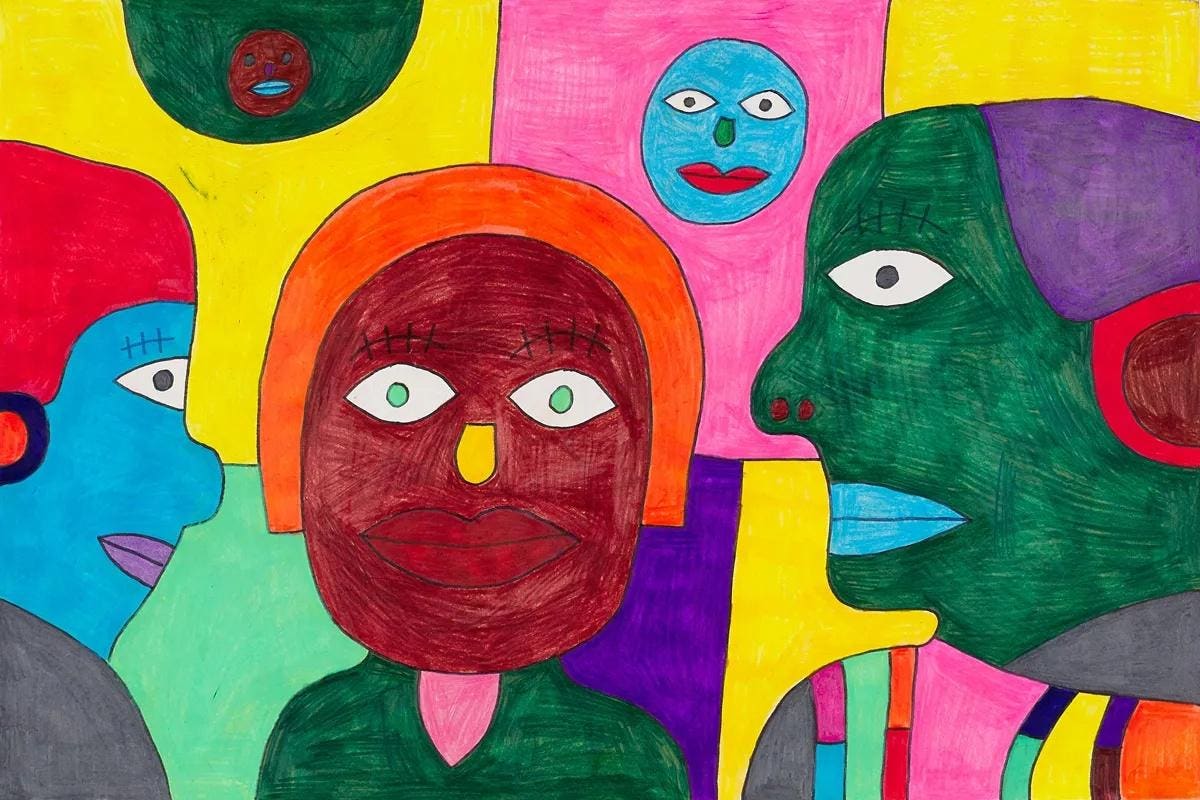In a press release last month, the Tierra del Sol Foundation announced the opening of the “Taking Up Space” exhibit at its namesake Tierra del Sol Gallery. The exhibit, which runs from November 11 to December 23 at the Gallery’s new West Hollywood location, is in its third year.
According to Tierra del Sol, the “inaugural exhibition invites every artist from Tierra del Sol’s Upland and Sunland Studio Arts Programs to contribute a single 18×12 inch work of any medium” adding they “have been working with artists on submissions for this third-annual group show [and the exhibit will] provide Tierra artists an opportunity for growth and celebration of their shared goals.” The intent of the work and the exhibit is to “empower artists to derive meaning and pleasure from making work that is legible and impactful to one’s own community.”
Tierra del Sol Foundation chief executive Rebecca Lienhard told me in an interview conducted late last month over email the exhibition’s origins can be tracked back to 2019, when a space in Los Angeles was opened with a focus of “expanding the gallery’s programming and connecting the Foundation’s artists with a global audience.” In the years since, the Gallery has introduced artists at Felix Art Fair, Frieze, and NADA Miami, as well as entered into partnerships with companies like Amazon and Netflix. All proceeds directly go towards artists and the Foundation—who are then able to offer studio space, materials, and career support.
“The Tierra del Sol Gallery has propelled countless artists into the world of contemporary art,” Lienhard said. “With the move to the new and larger Gallery space in West Hollywood, the possibilities are limitless.”
Lienhard, who has worked at the Tierra del Sol Foundation for 33 years and has a Master’s degree in special education with an emphasis on moderate-to-severe disabilities, was emphatic in telling me the advocacy for the disability community always will be “a civil rights movement.” Moreover, she said disabled people are no different than anybody else, saying they wish to be “included and valued for who they are and what they contribute.” The Foundation acknowledges and supports that sentiment to the fullest extent.
“Having worked alongside thousands of people with disabilities during my career, my staff and I have experienced firsthand what these individuals can accomplish when given an equal opportunity. Seeing them succeed has been both a gift and a motivator to us, their peers, and their families,” Lienhard said of the importance of embracing disability inclusion. “At Tierra del Sol, we believe that a strong and vibrant community is one in which all its members contribute to the strengths and assets for the common good. Tierra’s vision is that all people live productive and personally meaningful lives as neighbors, co-workers, contributors to the economic, civic, and cultural vitality of the community regardless of the notion of disability.”
When asked how technology plays a role in the Gallery’s showings, Lienhard responded by saying the reliance upon tech has been especially crucial over the last three years of the pandemic. Tech has proven vital not only for the creation of art itself, but also in sustaining connections and finding support. Logistically, Lienhard said the Foundation has developed a database called Art Logic. It tracks the inventory of pieces made by over 150 artists spanning decades. The software tool, Lienhard told me, has been invaluable in documenting artists’ work as well as a chronicle of how “their work has evolved over the years.”
Technology’s impact, however, ultimately benefits the artists themselves.
“Artists have become self-advocates for their work through social media and for those who are non-verbal, these outlets give them a voice at the table to share their work,” Lienhard said.
As to feedback, Lienhard told me society is amidst “a very reflective and critical time between the intersection of disability, race, and ethnicity.” The disability community, she continued, has historically been marginalized based on biases and pre-conceived notions over whether disabled people are capable of being competent, meaningful contributors to the world. At an individual level, Lienhard told me she feels a responsibility to “continue to strive to be a voice for the marginalized” as the leader of the Terra del Sol Foundation. It’s life-changing for so many.
It’s imperative society “not tolerate anything less than equality for all.”
“We have witnessed, personally and professionally, that when a person sees another person for who they really are, for the gifts they bring to the world, that our communities have reached a richness and strength that is unbreakable, even in the face of injustice,” Lienhard said of the intersection of disability and art. “Likewise, when a person looks at a piece of art and falls in love, this is the very moment when the individual stands equally with all other artists, regardless of the notion of disability. It is those moments that drive us in our daily endeavors.”
Looking towards the future, Lienhard was succinct in sharing her vision.
“It is my hope that one day all lines of differences are washed away and the only thing we are left with is the beauty of all of the faces that greet us each day as we help each individual find a place of belonging and valued contribution to the larger world,” she said.
Read the full article here





